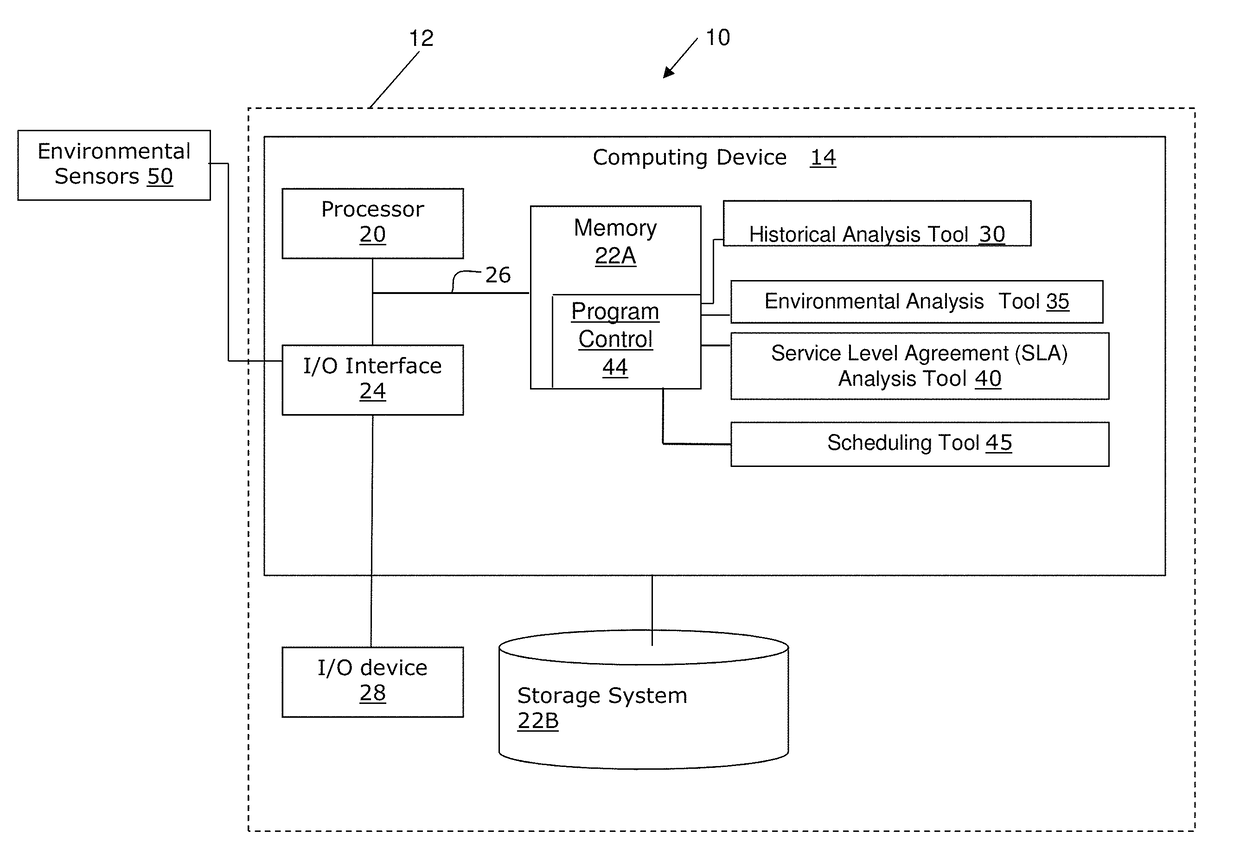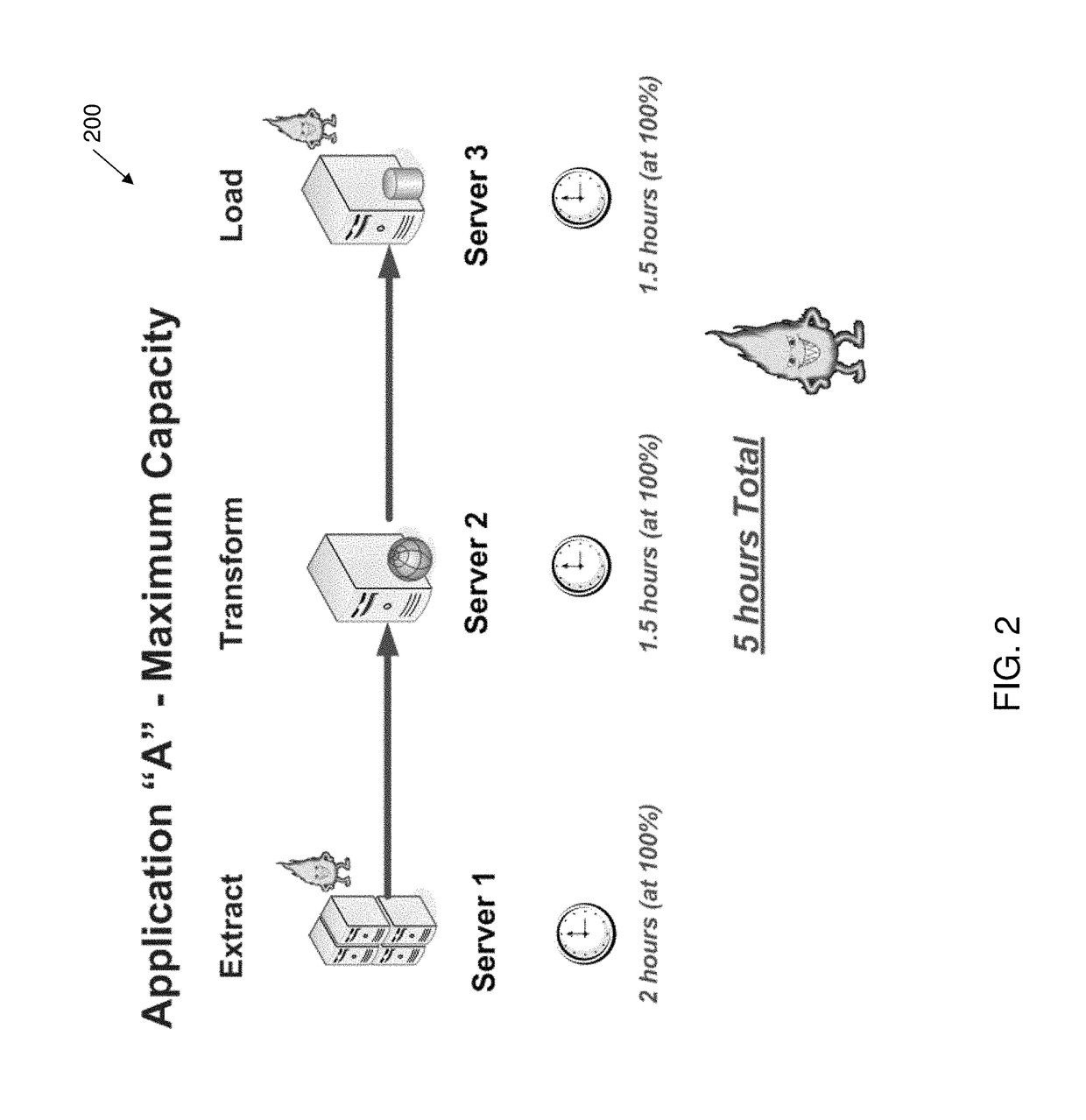System and method to control heat dissipation through service level analysis
a technology of service level analysis and heat dissipation, applied in data switching networks, multi-programming arrangements, instruments, etc., can solve the problems of increasing operational costs, waste of energy, undesirable over-use of energy, etc., and achieve the effect of slowing down one or more candidate processing jobs
- Summary
- Abstract
- Description
- Claims
- Application Information
AI Technical Summary
Benefits of technology
Problems solved by technology
Method used
Image
Examples
Embodiment Construction
[0018]The present invention generally relates to reducing heat dissipated within a data center, and more particularly, to a system and method for reducing heat dissipated within a data center through service level agreement analysis, and resultant reprioritization of jobs to maximize energy efficiency. By analyzing the service level agreements and application job schedules, the application workload of a data center may be scaled back (e.g., by not running the job at maximum speed) to reduce the heat and energy output within a data center while still meeting a SLA. For example, application jobs that have a lower priority (as indicated by the SLA) may be delayed for execution during known periods of maximum workload, when overall heat output may be a concern.
[0019]By implementing the present invention, unevenness (or burstiness) of jobs may be reduced so that periods of intense heat in the data center (which would require additional cooling, and thus, additional energy expenditure) ar...
PUM
 Login to View More
Login to View More Abstract
Description
Claims
Application Information
 Login to View More
Login to View More - R&D
- Intellectual Property
- Life Sciences
- Materials
- Tech Scout
- Unparalleled Data Quality
- Higher Quality Content
- 60% Fewer Hallucinations
Browse by: Latest US Patents, China's latest patents, Technical Efficacy Thesaurus, Application Domain, Technology Topic, Popular Technical Reports.
© 2025 PatSnap. All rights reserved.Legal|Privacy policy|Modern Slavery Act Transparency Statement|Sitemap|About US| Contact US: help@patsnap.com



